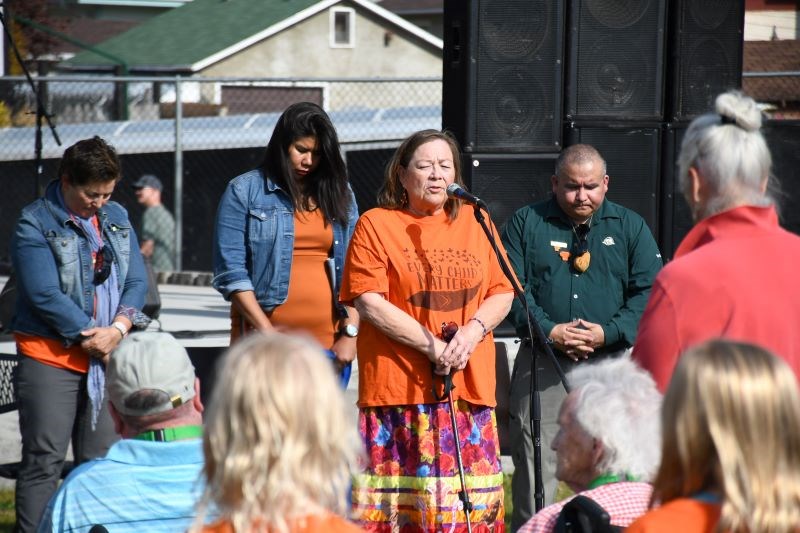Peter Shokeir | [email protected]
Jasper National Park commemorated the National Day for Truth and Reconciliation during a public event at Commemoration Park on Sept. 30.
This day was established in 2021 to honour residential school survivors, their families and Indigenous communities.
The event began with a smudging ceremony and opening prayers, followed by a number of speakers.
“On this day, we honour the survivors, the children who died, their families and communities and Indigenous colleagues who have been forever changed by the intergenerational trauma caused by the loss of Indigenous knowledge, language, culture and connection to place,” said Alan Fehr, superintendent for the Jasper Field Unit.
“51���� of unmarked graves at the sites of former residential schools continues to leave an indelible mark on our shared history, and so here on this day, we stand together to breathe and heal.”
Fehr acknowledged that Indigenous communities with connections to the local area now known as Jasper National Park have been harmed by this history and highlighted how the upcoming Jasper Indigenous Exhibit would help tell their stories.
Mayor Richard Ireland spoke on how a land acknowledgement was inseparable from an acknowledgement of responsibility and accountability.
“Words of acknowledgment cannot be empty rhetoric,” Ireland said.
“We do not say these words with the hope or expectation that they absolve us. Instead, we say these words to reaffirm and recommit to our continuing accountability, and it is that accountability which is at the heart of this National Day for Truth and Reconciliation.”

Tracy Friedel with the Lac Ste. Anne Métis community noted that while the Métis didn’t fall under the Indian Act, some Métis children did attend residential schools.
“Metis children who attended residential schools as adults have talked about feeling like outsiders and (in) some cases told they were too white for the residential school,” Friedel said.
“Conversely, when a policy of integration in public schooling began in 1951, Métis children were told they were too Indian for the provincial school system.”
Amanda Celesta with the Simpcw First Nation said she was at work in Jasper when news broke of the 215 unmarked graves at the Kamloops residential school.
“When that first came out on the news, my first reaction was we already knew about those children,” Celesta said.
“Every community that has one of those institutions in its backyard knows. They already knew, and so that was my reaction, and it took off and it couldn’t be ignored anymore, and that’s when that really hit me.”
Carol Wildcat with the Ermineskin Cree Nation explained the true purpose of residential schools in a passionate speech to the attendees.
“The reason behind residential schools was to Anglicize us and to make us servants. It wasn’t there to teach us to remember who we are and what we’ve done. It took away the histories of our peoples, all of us. That’s the way conquerors rule.”
“It’s the younger generation of Canadians and Albertans that need to know the history that Canada has,” she added.




